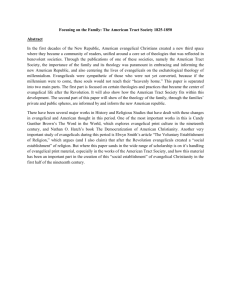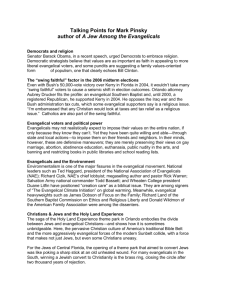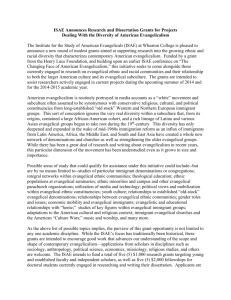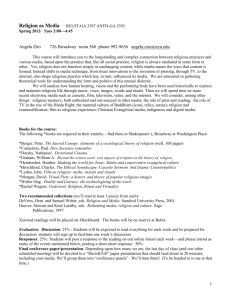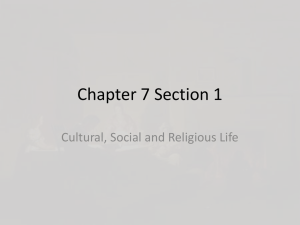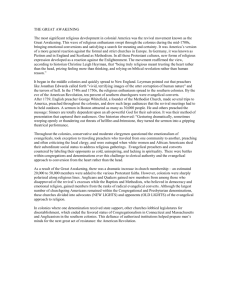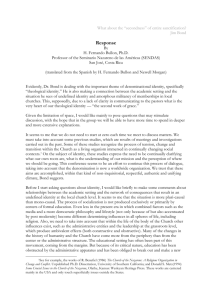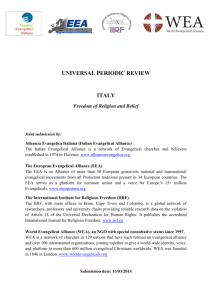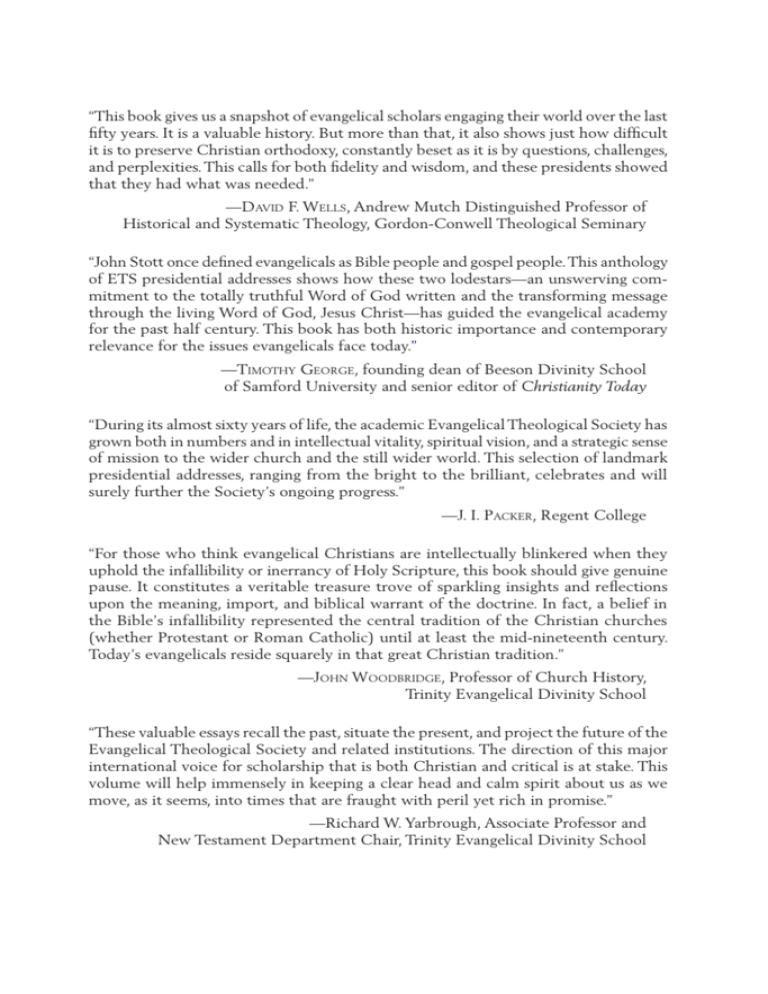
“This book gives us a snapshot of evangelical scholars engaging their world over the last
fifty years. It is a valuable history. But more than that, it also shows just how difficult
it is to preserve Christian orthodoxy, constantly beset as it is by questions, challenges,
and perplexities. This calls for both fidelity and wisdom, and these presidents showed
that they had what was needed.”
—DAVID F. WELLS, Andrew Mutch Distinguished Professor of
Historical and Systematic Theology, Gordon-Conwell Theological Seminary
“John Stott once defined evangelicals as Bible people and gospel people. This anthology
of ETS presidential addresses shows how these two lodestars—an unswerving commitment to the totally truthful Word of God written and the transforming message
through the living Word of God, Jesus Christ—has guided the evangelical academy
for the past half century. This book has both historic importance and contemporary
relevance for the issues evangelicals face today.”
—TIMOTHY GEORGE, founding dean of Beeson Divinity School
of Samford University and senior editor of Christianity Today
“During its almost sixty years of life, the academic Evangelical Theological Society has
grown both in numbers and in intellectual vitality, spiritual vision, and a strategic sense
of mission to the wider church and the still wider world. This selection of landmark
presidential addresses, ranging from the bright to the brilliant, celebrates and will
surely further the Society’s ongoing progress.”
—J. I. PACKER, Regent College
“For those who think evangelical Christians are intellectually blinkered when they
uphold the infallibility or inerrancy of Holy Scripture, this book should give genuine
pause. It constitutes a veritable treasure trove of sparkling insights and reflections
upon the meaning, import, and biblical warrant of the doctrine. In fact, a belief in
the Bible’s infallibility represented the central tradition of the Christian churches
(whether Protestant or Roman Catholic) until at least the mid-nineteenth century.
Today’s evangelicals reside squarely in that great Christian tradition.”
—JOHN WOODBRIDGE, Professor of Church History,
Trinity Evangelical Divinity School
“These valuable essays recall the past, situate the present, and project the future of the
Evangelical Theological Society and related institutions. The direction of this major
international voice for scholarship that is both Christian and critical is at stake. This
volume will help immensely in keeping a clear head and calm spirit about us as we
move, as it seems, into times that are fraught with peril yet rich in promise.”
—Richard W. Yarbrough, Associate Professor and
New Testament Department Chair, Trinity Evangelical Divinity School
QUO VADIS,
EVANGELICALISM?
Perspectives on the Past,
Direction for the Future
Presidential Addresses from the First Fifty Years
of the Journal of the Evangelical Theological Society
Edited by
Andreas J. Köstenberger
Foreword by
Roger Nicole
C R O S S WAY B O O K S
W H E ATO N,
I L L I N O I S
Quo Vadis, Evangelicalism? Perspectives on the Past, Direction for the Future: Presidential Addresses
from the First Fifty Years of the Journal of the Evangelical Theological Society
Copyright © 2007 by the Evangelical Theological Society
Published by Crossway Books
a publishing ministry of Good News Publishers
1300 Crescent Street
Wheaton, Illinois 60187
All rights reserved. No part of this publication may be reproduced, stored in a retrieval system, or
transmitted in any form by any means, electronic, mechanical, photocopy, recording, or otherwise,
without the prior permission of the publisher, except as provided for by USA copyright law.
Design and typsetting by Lakeside Design Plus
Cover design: Luke Daab, daabcreative.com
First printing 2007
Printed in the United States of America
Scripture quotations marked ESV are from The Holy Bible, English Standard Version®, copyright
© 2001 by Crossway Bibles, a publishing ministry of Good News Publishers. Used by permission. All rights reserved.
Scripture quotations marked NASB are from The New American Standard Bible.® Copyright ©
The Lockman Foundation 1960, 1962, 1963, 1968, 1971, 1972, 1973, 1975, 1977. Used by
permission.
Scripture references marked NIV are from The Holy Bible: New International Version.® Copyright
© 1973, 1978, 1984 by International Bible Society. Used by permission of Zondervan Publishing
House. All rights reserved.
The “NIV” and “New International Version” trademarks are registered in the United States
Patent and Trademark Office by International Bible Society. Use of either trademark requires
the permission of International Bible Society.
Library of Congress Cataloging-in-Publication Data
Quo vadis, evangelicalism? : perspectives on the past, direction for the future :
presidential addresses from the first fifty years of the Journal of the Evangelical Theological
Society / edited by Andreas J. Köstenberger.
p. cm.
Includes bibliographical references and index.
ISBN 978-1-58134-968-9 (tpb)
1. Evangelical Theological Society—Presidents. 2. Journal of Evangelical Theological
Society. 3. Evangelicalism--History. I. Köstenberger, Andreas J., 1957– II. Title.
BR1640.A1Q5 2007
270.8'2—dc22
2007024323
VP
14
13
16
12
15
11
14
10
13
9
8
12
11
7 6 5
10
4
09
08
3 2 1
Foreword
A
s one of the very few surviving founders and charter members of the Evangelical Theological Society, it gives me
great pleasure to recommend highly Andreas Köstenberger’s
Quo Vadis, Evangelicalism? Often evangelicals have been
considered by those who differ from them as beati possidentes, people
who are happy in the enjoyment of what they possess without much
care given either to what others are thinking or about ways in which
they themselves might improve their own scholarship.
Köstenberger, the Journal of the Evangelical Theological Society editor,
on the occasion of the fiftieth anniversary of the Journal, has chosen
nine of the annual presidential addresses as embodying perspectives
on the past and direction for the future. The choice that he made will
clearly show that the Society has not been immune from criticism
from without or from within. Yet it is also apparent that, under the
safeguard of the supreme authority of the autographic Scripture as
the Word of God, we have been eager to acknowledge and validate
any truth, irrespective of its origin.
Dr. Köstenberger has also provided a helpful introduction and a
challenging brief epilogue. We are grateful that under the providence
of God our Society has grown from about one hundred members in
1949 to more than four thousand in the last few years. We hope that
this book will help others to understand our stance and help us by the
grace of God to fulfill our aims, to the glory of God.
Roger Nicole
Introduction:
Quo Vadis, Evangelicalism?
Andreas J. Köstenberger
T
he Latin phrase Quo vadis? (“Where are you going?”) is most
famously found in the Vulgate translation of John 13:36
(cf. 16:5) where Peter asks Jesus this question prior to the
crucifixion. The reference is later picked up and further developed in the apocryphal Acts of Peter. More recently, Quo Vadis?
was the title of a novel written by Henry Sienkiewicz and set at the
time of Roman emperor Nero in AD 64, in which Marcus Vinicius, a
Roman patrician, falls in love with a young Christian woman, Lygia.
Since it came out in 1896, the book has been translated into over fifty
languages, and its author was awarded the Nobel Prize in Literature
in 1905. Famously, Hollywood made the book into an epic movie in
1951 (MGM).
In case you haven’t seen the movie, or read the book, I will not spoil
your enjoyment by telling you the ending. In any case, my primary
concern is not with the movie or the book Quo Vadis? or even Peter’s
original question to Jesus. I believe that once again, in our day, the
Andreas Köstenberger, director of PhD Studies and professor of New Testament at Southeastern Baptist
Theological Seminary, 120 S. Wingate St., Wake Forest, NC 28587, is the current editor of the Journal of the
Evangelical Theological Society (JETS) and founder of Biblical Foundations (www.biblicalfoundations.com;
www.biblicalfoundations.org), a ministry dedicated to helping restore the biblical foundations for the home,
the church, and society.
10
Andreas J. Köstenberger
question is appropriate to ask of the evangelical movement at large:
“Where are you going, evangelicals?” There are some who stress doctrinal fidelity, including biblical inerrancy, defined in terms of a literalism
that insists on us having the ipsissima verba (“exact words”) of Jesus
in every instance in the New Testament. There are others who insist
that “evangelical” can mean just about anything. In between, there is
a large variety of definitions and understandings. In fact, there seem to
be almost as many views on what it means to be evangelical as there
are evangelicals.
The present volume gathers together some of the most seminal presidential addresses in the Evangelical Theological Society’s fifty-year history
of the publication of its journal, the Journal of the Evangelical Theological
Society (JETS).1 What all these addresses—penetrating and well-articulated
all, with characteristic candor and at times even entertaining—have in
common is that they address not a more narrow, specialized topic (as
many other, worthy presidential addresses did over the years), but the
present state and future prospects of the Evangelical Theological Society
in particular and of the evangelical movement as a whole.2
The addresses fall nicely into three periods: The Early Years (1958–
1970); The Maturing Movement (1971–1999); and Recent Reflections
(2000–2007). For each period, three presidential addresses were chosen.
The first three addresses, by Ned Stonehouse, Warren C. Young, and
Gordon H. Clark, all deal with the one foundational issue forming the
doctrinal base of the Evangelical Theological Society, namely, inerrancy. In the second period, Stanley Gundry, Alan Johnson, and Moisés
1. See Andreas J. Köstenberger, “Editorial,” JETS 50, no. 1 (Mar. 2007): 1–2. Three presidential addresses
with suitable topics, by Allan MacRae (1960), Burton Goddard (1964), and Kenneth Kantzer (1968; see the
table on p. 221), could not be included here because they were not printed in the Bulletin/Journal and, despite
major efforts, could not be found. Wayne Sparkman, director of the PCA Historical Center in St. Louis, MO,
where many of Allan MacRae’s papers are kept, did not succeed in locating MacRae’s ETS presidential address. Burton Goddard, in a note dated Feb. 28, 2007, writes, “Sorry. I do not have what you request.” Dick
Kantzer, son of Kenneth Kantzer, informed me in a message on Feb. 22, 2007, that he was unable to locate
his father’s address, adding, “It is also possible that my father recycled portions of that speech and literally cut
and stapled it into any number of other presentations since those were the days he was constantly working
to build and shape evangelical institutions.”
2. Hence the non-inclusion of other presidential addresses does not mean these do not have merit, but
rather that they do not fit as well into the specific topic chosen for the present volume, that is, the present
and future state of the evangelical movement at large. An example of this is the presidential address of Carl
F. H. Henry, a towering figure of American evangelicalism in the last half century, on the topic of justification
(1969). Henry’s influence on the ETS is without question; for example, he delivered the banquet address at
the founding meeting of the Society, December 27–28, 1949, in Cincinnati, OH, on “Fifty Years of American
Theology and the Contemporary Need,” which led to the publication of Henry’s Fifty Years of Protestant Theology
(Boston: W. A. Wilde, 1950) the following year, a volume still very much worth reading.
Quo Vadis, Evangelicalism?
11
Silva each deal with critical issues (in more ways than one) related to
evangelical exegetical and theological practice and methodology. The
three addresses by Darrell Bock, Millard Erickson, and Craig Blaising
provide instances of recent reflections on those and other issues. The
summaries below are offered in the hope of weaving a meta-narrative
connecting the various addresses so as to document the quest of the
evangelical movement—and the Evangelical Theological Society as
part of that movement—to define its identity in the midst of the larger
world of scholarship and the surrounding culture.
In our brief survey we turn first to the three essays chosen to sketch
the thinking of evangelical leaders through the first period, the Early
Years, spanning from 1958 until 1970. Ned Stonehouse’s address, “The
Infallibility of Scripture and Evangelical Progress,” was delivered in
1957 and printed in the very first issue of the Journal (or the Bulletin
of the Evangelical Theological Society, as it was called at that time). In
a programmatic presentation, Stonehouse, as indicated by the title,
argues that there is an inextricable link between an affirmation of the
infallibility of Scripture on the one hand and true evangelical progress on the other. Stonehouse acknowledges that this contention runs
counter to the view, common in his as well as our day, that a belief in
scriptural infallibility reflects obscurantism and presents an intolerable
burden for the evangelical scholar.
Yet Stonehouse contends that, rightly conceived, “our doctrine of
Scripture is an aspect of our doctrine of God.” This, of course, is in
keeping with the ETS doctrinal base, according to which “[t]he Bible
alone, and the Bible in its entirety, is the Word of God written and is
therefore inerrant in the autographs.”3 In holding to the infallibility of
Scripture, Stonehouse insists, evangelicals must first of all maintain “a
qualitative distinction between Scripture and tradition.” We should
not despise tradition, but neither should we absolutize it.
Second, in a related point, evangelicals must recognize Scripture’s
final authority. It is not enough to profess scriptural inerrancy; one
must also award the Bible authoritative status. Among other things,
this will mean that rather than holding to the dubious rule, “as literal
as possible,” we will maintain that “the infallible rule of interpretation
of Scripture is the Scripture itself.” It will also mean that we will give
3. Emphasis added.
12
Andreas J. Köstenberger
both God and Christ their due in our reading of Scripture and its redemptive message. In these ways the evangelical commitment to the
inspiration and infallibility of Scripture will prove to be a liberating
and energizing force by which we “lay hold with all our powers upon
the Word of God in order that all our thoughts and ways may come
under his control.”
Warren Young’s address, carrying the programmatic title, “Whither
Evangelicalism?” dates from the following year, 1958, and was printed
in 1959. In his opening remarks, Young chronicles the increasing dissatisfaction felt in his day with the arid type of fundamentalism that,
while advocating conservatism and literalism, was judged insufficient
to bring about spiritual revival and to address adequately the historical challenges brought against the Christian faith and the truthfulness
of God’s Word. To reverse this trend, Young proposes to deal with
the following four main tendencies: (1) a tendency toward an understanding of theology as an experiential as well as a rational discipline;
(2) a tendency to listen to what science has to say about man; (3) a
tendency to restudy the problem of communications in the light of
modern semantics; and (4) a tendency to reconsider and restate our
understanding of the doctrine of revelation.
Regarding the first tendency, Young notes that there are limits to
the propositional, systematic presentation of Scripture; we must come
face-to-face with “the inescapable facet of subjectivity inherent in the
Christian faith.” Incipient in this realization is what has in subsequent
years given rise to explorations as to the nature of biblical inerrancy
and the different kinds of genres represented in Scripture. Second,
Young encourages further work in the area of human origins but warns
against denials of Adam as a historical person and of the fall as a historical event. The third issue relates to language as the vehicle of divine
communication. While language is relative (i.e., culture-bound), this
does not mean that it is incapable of revealing truth about an absolute God. Fourth, Young notes the diversity of views on the nature
of divine revelation and its implications for our view of inspiration,
plenary and verbal.4
In his concluding comments, at the close of the first decade of the
ETS, Young notes that theology is always changing, because theology
4. Young is perhaps too critical of J. I. Packer’s views expressed in an article published in 1958.
Quo Vadis, Evangelicalism?
13
is seeking to address the changing world in which we live. The ETS
and the evangelical movement will progress, therefore, if its theology,
while grounded in “the unchanging Truth of God as revealed in Jesus
Christ and recorded in our unchanging Bible,” creatively explores ways
of addressing the ever-changing world around us. For this reason there
should be room for this kind of creative exploration in the Evangelical
Theological Society, or progress, rightly defined, will likely be stifled.
In December 1965, Gordon Clark delivered another important,
forward-looking presidential address, bearing the title “The Evangelical
Theological Society Tomorrow.” Clark notes the battles raging around
the so-called formal principle of the Reformation, namely the truthfulness of Scripture. He maintains that no one can rightly call himself
“evangelical” who rejects this foundational tenet, and points out that
the very purpose of the founding of the ETS is tied up with propagating the doctrine of scriptural infallibility. As did Ned Stonehouse
before him, Clark notes that the ETS doctrinal base is cast in the
logical form of an implication: because the Bible is the Word of God,
it is therefore inerrant.
In his ensuing comments Clark vigorously maintains that the present (1965) task of the Society continues to be that of upholding a
high view of Scripture. This, he notes, may come at a cost, such as
the ETS losing some of its members who (citing a resignation letter)
find it “spiritually unnecessary and intellectually impossible to accept
the last clause of the Society’s doctrinal basis” regarding inerrancy. To
be sure, biblical inerrancy should not be viewed as a truth without
which no one can be saved, but it is an important foundational doctrine nonetheless. In fact, without adhering to the “formal principle” of
the Reformation, other important doctrines, such as justification (the
“material principle”) are likely to fall by the wayside as well—a truly
prophetic word in light of recent efforts at redefining this and other
doctrines. “If the Bible in a hundred different passages is mistaken in
its account of itself, why should the rest of its message be accepted as
true?” Clark asks.
If the Bible is nothing but the word of men—as was stated by the
new creed of the United Presbyterian Church—it cannot be trusted.
Our faith would have lost the legitimate basis on which to affirm the
truthfulness of any one doctrine. Those who wish to affirm the truthfulness of a biblical doctrine while rejecting the Bible’s truthfulness
14
Andreas J. Köstenberger
must explain on what basis they are able to do so. “In theology, as in
automotive engineering, if you take out the spark plugs, you will have
to use some substitute, or the car won’t go.” If such is the view of any
ETS member, Clark urges, better for him to honestly resign than to
dishonestly remain. Adapting Luther’s adage, “Let goods and kindred
go; some memberships also.”
After these three early contributions, we move into the period of
“The Maturing Movement” (1971–1999). Three seminal presidential addresses delivered during those three decades, those by Stanley
Gundry, Alan Johnson, and Moisés Silva chronicle and characterize the
pressing questions of this era in the life of the ETS and of the evangelical movement. Stanley Gundry’s presidential address (delivered in
December 1978) bears the title “Evangelical Theology: Where Should
We Be Going?”5 Not content merely to describe the status quo, Gundry
challenges his fellow society members in several areas.
While the Early Years seem to have focused primarily on asserting
the truthfulness and inerrancy of Scripture as the legitimate and only
adequate doctrinal base from which the ETS and its scholars can do
their work, it appears that in this phase of the Maturing Movement
certain methodological questions raised their heads, and it became
necessary not to move beyond inerrancy but to flesh out more precisely
its methodological implications for evangelical scholarship. What is
more, the makeup of the Society itself became the subject of concern,
as we will see shortly.
As Gundry notes in his opening remarks, one question will not go
away: the inerrancy question. He cautions against either of two extremes: so narrowing inerrancy as to depart from its biblical basis and
the historical understanding of the concept, or repudiating the concept
altogether or letting inerrancy die the death of a myriad of qualifications.
Gundry affirms that one’s position on inerrancy is “a kind of watershed
indicating the logical, and perhaps eventual, direction of one’s theology.”
At the same time, he urges love toward non-inerrantists and “open
confrontation of issues, not people” (something that, as subsequent
history has shown, is easier said than done, if possible at all).
5. Gundry’s title alludes to that year’s conference title, “Evangelical Theology: Where Are We and Where
Are We Going?”
Quo Vadis, Evangelicalism?
15
Gundry notes that while defending inerrancy, inerrantists will be
confronted by some rather difficult questions themselves. He also
points out that there was not a “common, univocal meaning” ascribed
to the word “inerrancy.”6 Gundry proceeds to list a host of difficult
questions for inerrantists, including whether or not it is in keeping
with inerrancy to hold to the presence of pseudonymity in Scripture or
whether “a New Testament scholar who subscribes to inerrancy [can]
legitimately argue that the evangelists created a distinctively Christian type of literary genre called ‘Gospel,’ somewhat akin to Jewish
midrash, in which historical accuracy, in the author’s intention, took
second place to the author’s exposition of the Christian message, with
the result that there are actual discrepancies and contradictions among
the Gospels in reportorial details.”
Gundry also notes two different approaches in resolving apparent
contradictions in Scripture among inerrantists: (1) proposing a solution which technically is possible but not the most natural meaning; or
(2) suspending judgment and acknowledging that no natural resolution
has been found to date (Gundry expresses his preference for the latter
approach). As Gundry observes, however, neither approach is free from
difficulty in that both ways of dealing with apparent discrepancies seem
to fall short of the principle of the “clarity of Scripture.”
By his probing comments Gundry exemplifies just the type of honest self-examination and openness to the evidence that he calls for in
dealing with thorny issues defying simplistic resolution. This, in my
view, is an important way in which the ETS sought to move away from
a rigid fundamentalism (decried by Warren Young citing A. W. Tozer
in his presidential address; see above) to a more carefully nuanced
evangelical approach that, while holding to a high, inerrant view of
Scripture, is willing to face the challenges presented to such a commitment by the complex nature of some of the evidence.
Gundry rightly observes that issues such as the ones mentioned
above move inerrancy into the realm of hermeneutics.7 In fact, James
6. This, incidentally, became very clear in the early years of the new millennium when the ETS saw itself
confronted with the need to deal with the teachings of open theism and the question of its proper scriptural
and hermeneutical basis. Two members of the ETS executive committee voted not to expel two leading proponents of this theology on the basis that the doctrinal base in their judgment provided insufficient grounds
on which to judge open theism as violating biblical inerrancy. The Society has subsequently put in place a
new bylaw in order to address this perceived deficiency (see p. 218).
7. See his helpful listing in a footnote of a whole slew of articles from the Bulletin and the Journal of the
Evangelical Theological Society in the decade between 1968 and 1978.
16
Andreas J. Köstenberger
Barr’s then-recent book Fundamentalism (published in 1977; see ch. 6)
presented evangelicals with a considerable list of unfinished business. To
this end, Gundry urges that the ETS “should be a forum where those
with a commitment to inerrancy can come to grips with the problems
of definition and hermeneutics.” After all, the ETS doctrinal base was
never intended as a creed. It is rather “a doctrinal basis on which we
have agreed to do our scholarly work.” Hence evangelical scholars are
faced with the dual task of defending inerrancy externally over against
errantists while continuing to clarify internally the implication of their
inerrantist position.
What is more, evangelical scholars must move beyond internecine
quibbles about inerrancy to the constructive task of formulating “a
biblically-based evangelical theology addressing the issues of our time”
(expressing a concern similar to that voiced by Warren Young). It is
important to have a proper foundation; but of what value is even
a proper foundation without a building on top of it? Among such
issues that evangelicals should address, according to Gundry (speaking in 1978), are various aspects of ecclesiology and missiology: the
former including the questions of church structure and the nature of
Christian ministry; the latter comprising issues such as collaboration
with other Christian groups and challenges posed by the need for
contextualization of the Christian message. But common to all these
challenges, Gundry notes in his conclusion, is the need for more attention to hermeneutics; it constitutes “the unfinished item on our
agenda of theological prolegomena. . . . Without a hermeneutical
consensus, any hope for a consensus in theology and ethics is mere
wishful thinking.”
To pause and evaluate for a moment, Gundry is clearly right in identifying hermeneutics as a critical issue to be addressed in the continuing
debate. How we interpret Scripture will invariably affect our interpretive conclusions. At the same time, I believe, the decades subsequent to
Gundry’s programmatic remarks have shown that even a hermeneutical
consensus among scholars does not necessarily lead to a convergence in
exegetical results. I am thinking here in particular of the complementarian-egalitarian divide within evangelicalism where, in my observation,
both sides largely agree in general on what constitutes proper hermeneutics—such as giving priority to context, engaging in comprehensive
lexical and syntactical study, and so on—while coming to sharply differing
Quo Vadis, Evangelicalism?
17
exegetical results.8 While hermeneutics is clearly important, perhaps the
years subsequent to Gundry’s 1978 address have shown that hermeneutics is not quite the be all and end all Gundry seemed to suggest it was
from his vantage point. It may be that it is here that the types of larger
worldview questions impacting hermeneutics come to the fore—questions that have been increasingly recognized as absolutely critical in the
past two or three decades of hermeneutical thinking.9
The second of the presidential addresses chosen from this period,
delivered by Alan Johnson in December 1982, hones in precisely on
one of the critical issues defined by Stan Gundry: the methodological
implications of inerrancy in relation to the so-called “historical-critical
method.” The catchy title of Johnson’s message captures the essence
and scope of Johnson’s thought-provoking address: “The HistoricalCritical Method: Egyptian Gold or Pagan Precipice?”
Johnson’s address takes its point from Augustine’s comment on the
Christian use of certain ideas from pagan philosophers in which this
church father urged believers to accept the “Egyptian gold” supplied
for the Israelites at the Exodus as provided “by the mines of divine
Providence.” Does this principle enunciated by Augustine, Johnson asks,
also apply to the historical-critical method, or should it be feared and
shunned as “pagan precipice”—perhaps, one might add, in light of the
biblical injunction that “a little leaven leavens the whole dough”?
In the remainder of his address, Johnson contends that, given “a more
precise understanding of the origins of the historical-critical method
together with a rejection of its negative features,” the method, in the
hands of inerrantist scholars, can be used for the good of the church.
Johnson identifies the dual roots of the historical-critical method in the
Reformation’s emphasis on the literal-historical sense of the Bible and
the Enlightenment anti-supernaturalist view of history. (On a deeper
level, Johnson perceives a crisis of biblical authority, evidenced in the
demise of biblical theology, the abandonment of cognitive divine truth,
and fragmentation.)
8. I have sought to chronicle this in my evaluation of the hermeneutical chapters in Discovering Biblical
Equality (ed. R. W. Pierce and R. M. Groothuis [Downers Grove, IL: InterVarsity, 2004]) by Roger Nicole and
Gordon Fee, published in the Journal of Biblical Manhood and Womanhood 10, no. 1 (Spring 2005): 88–95. My
conclusion is that the difference between the two sides does not lie in hermeneutical theory but in exegetical
practice, so that the overall question turns on consistency between a group’s enunciated hermeneutical theory
and its practice of that theory in the exegesis of specific biblical passages.
9. See especially the work of Kevin J. Vanhoozer, most notably his The Drama of Doctrine (Louisville:
Westminster John Knox, 2005) and D. A. Carson, The Gagging of God (Grand Rapids: Zondervan, 1996).
18
Andreas J. Köstenberger
According to Johnson, some see only the negative antecedents and
advocate a complete rejection of the historical-critical method, while
others affirm the validity of the philological, cultural, historical, literary, and archaeological study promoted by the Reformation vein
of thought.10 The question is, are the tools (such as source, form, or
redaction criticism) themselves hopelessly tainted by anti-supernaturalist presuppositions as to render them useless for inerrantists or can
they be transformed in the hands of Bible-believing scholars to serve
as useful means of studying various aspects of Scripture? Johnson’s
sympathies lie decidedly with the latter view. He concludes with a plea
for evangelical unity (“ecumenicity”) and dialogue in navigating this
“healthy, tolerant tension,” which holds hope for the ETS in particular
and evangelicalism at large.
The years since Johnson’s address have seen continued polarization
of the two camps identified by Johnson, with Eta Linnemann, Robert
Thomas, and Norman Geisler representing the first position11 and
advocates of the judicious use of a historical-critical approach, such
as D. A. Carson and Darrell Bock, representing the other, though the
pendulum seems to have swung toward the side of the latter group.
Nevertheless, the question remains, to what extent can evangelical
scholars credibly engage in, for example, the “quest for the historical
Jesus” with its various criteria for historicity, when they are tied by
their doctrinal presuppositions to an inerrantist position that precludes
a negative outcome of their assessment of the historicity of a given
pericope in the Gospels?12
Fascinatingly, Moisés Silva, in “‘Can Two Walk Together Unless They
Be Agreed?’ Evangelical Theology and Biblical Scholarship” (1997),
takes up the challenge voiced by Stan Gundry in his presidential address almost twenty years earlier to address the concerns raised by
10. Among those evangelicals engaged in redaction-critical study, Johnson lists Grant Osborne, Robert
Stein, and Robert Gundry, among others. Johnson also mentions Ned Stonehouse, the exegete (see comments
on his presidential address above), and Moisés Silva’s discussion of the principles enunciated by Stonehouse.
The other scholar who receives Johnson’s commendation is Carl F. H. Henry, the theologian, and his analysis
of “The Uses and Abuses of Historical Criticism.”
11. See Eta Linnemann, Historical Criticism of the Bible: Methodology or Ideology? trans. Robert W. Yarbrough (Grand Rapids: Baker, 1990); Robert L. Thomas, The Jesus Crisis: The Inroads of Historical Criticism
into Evangelical Scholarship (Grand Rapids: Kregel, 1998); and Norman L. Geisler, “Beware of Philosophy: A
Warning to Biblical Scholars,” JETS 42 (1999): 3–19.
12. On challenges faced by evangelical scholars in the area of Jesus studies, see the remarks on Darrell
Bock’s presidential address and his own full remarks in chapter 7.
Quo Vadis, Evangelicalism?
19
James Barr in his 1977 work Fundamentalism, which is highly critical
of evangelicals.
Silva’s remarks are of particular interest since he studied under
Barr, having high regard for the philological acumen on display in
Barr’s seminal work The Semantics of Biblical Language (1961). At the
outset, Silva takes exception to Barr’s choice of the most prejudicial
term available, “fundamentalism,” to describe a wide range of scholars,
suggesting that all of them, by virtue of applying the label “fundamentalist,” are, in Barr’s words, guilty of “narrowness, bigotry, obscurantism
and sectarianism.”
Second, Silva objects to Barr’s tendentious description of fundamentalists: (1) their strong emphasis on the inerrancy of Scripture; (2) their
hostility toward biblical criticism and modern theology; and (3) their
alleged belief that those who do not share their viewpoint “are not
really ‘true Christians’ at all” (i.e., their tendency toward separatism).
As Silva points out, however, no inerrantist believes that inerrancy is
required for salvation. In fact, conservatives such as J. Gresham Machen
(Ned Stonehouse’s teacher) explicitly affirmed the very opposite. To
make matters worse, Barr says nothing about the underlying convictions that motivate evangelical belief in biblical inerrancy, such as their
personal relationship with God and their desire to obey his Word and
serve him.
Third, Barr did not read widely enough in evangelical literature. Most
glaringly, he almost completely ignored Machen, whose contribution
to the movement is beyond doubt.
At the same time, Silva identifies a half-dozen valid criticisms Barr
lodges against evangelicals (or “fundamentalists,” as he prefers to call
them). Among these he cites (1) the selectivity with which the supernatural is invoked; and (2) the way in which evangelicals relate to
mainstream critical biblical scholarship. The latter includes a “tendency
to adopt a critical point of view but to use that approach only when it
supports the evangelical agenda.” Thus evangelicals read critical works
whose methods they reject in order to find arguments to refute their
critics. Or we avoid doctrinal issues by focusing our research on areas
that do not conflict with evangelical convictions.
According to Barr, conservatives regularly borrow from critical scholars whose presuppositions they do not share without acknowledging
their debt. Yet ironically, Barr noted acerbically, this is precisely where
20
Andreas J. Köstenberger
they make their scholarly contribution. In some cases, this may occur
deliberately; scholars may identify themselves as evangelical in order
to maintain their conservative base and constituency (not to mention
their readership and teaching position!) while knowingly abandoning
actual conservative positions. In other cases, even more alarmingly,
these individuals may not be aware of what they are doing, considering themselves conservative while having unknowingly imbibed from
a critical (polluted?) well.
Turning to Ned Stonehouse’s presidential address (surveyed above),
Silva self-critically points out that typically evangelicals have held
certain views of date and authorship with undue intensity, elevating
them to first-order status (he cites the early date of Daniel and the
Pauline authorship of the disputed letters as examples). Silva’s concern is that evangelicals back themselves into a corner that renders
them inflexible and insufficiently able to nuance their traditional view.
In this regard he expresses regret that the kinds of issues that led to
Robert Gundry’s resignation from the Society were never adequately
aired—according to Silva, a wasted opportunity.13 We must not be
content to pull ad hoc solutions out of the bag while leaving the larger,
underlying issues unaddressed. Thus, concludes Silva in answer to the
question posed in his title, evangelical theology and biblical scholarship can walk together, but only if they address the difficult questions
forthrightly and concretely.
From this we move to the third and last group of presidential addresses selected for inclusion in the present volume under the rubric
“Recent Reflections,” addresses by Darrell Bock, Millard Erickson, and
Craig Blaising. No doubt (at least in part) occasioned by the open theism
controversy in the ETS at that time, Bock (2001) made some proposals as to the proper way in which the nature of the Society ought to
be conceived in his opinion in his address “The Purpose-Driven ETS:
Where Should We Go?”14 At the outset, Bock cautioned against losing
sight of our larger mission in the world owing to undue self-preoccupation and introspection. Identifying himself as a “third-generation
member of ETS,” Bock set out to speak to the up-and-coming fourth
13. Though he acknowledges that one issue of the Journal (26, no. 1 [Mar. 1983]) was largely devoted
to the controversy.
14. The conference theme that year was “boundary setting.” Bock’s address also appeared in booklet form
from InterVarsity Press.
Quo Vadis, Evangelicalism?
21
generation, younger scholars who will lead the ETS and evangelical
movement into the middle of this century.
Bock begins his reflections by surveying the historical roots of evangelicalism from the Reformation until the present, characterizing this
history as unfolding under the rubric of the divine promise to the
church, “till glory makes us complete.” What is the proper role of ETS
as an organization, recognizing that ETS is only part of the evangelical
movement, defined as “people committed to Christ, his gospel, and the
primacy of Scripture”? This, according to Bock, depends in large part
on what type of organization ETS was founded to be. With reference
to remarks by Michael Horton and Shane Rosenthal, Bock uses the
metaphors of the ETS as a “village green” where people can meet and
exchange ideas and as a “public square” where people from the “circles”
of various confessional backgrounds can come together.
As such, Bock argues the ETS should be a “purpose-driven Society.”15
This purpose, Bock notes emphatically, is bound up with the church’s
missional mandate. The ETS, as part of evangelicalism at large, must
understand itself in its proper historical and global contexts. Surveying
the five decades of the Society’s existence, Bock discerns five major
issues that have surfaced, roughly one per decade: (1) science and the
Bible, especially origins (1959); (2) inerrancy, its definition, and hermeneutics (1979); (3) the role of historical criticism (1983); (4) women
and the Bible (1986); and (5) open theism (2001).
Interestingly, Bock quotes from three of the presidential addresses
also included in the present volume, those by Warren Young, Stanley
Gundry, and Alan Johnson, noting (and agreeing with) a consensus
that ETS should be a forum where those committed to inerrancy can
come together to solve various problems and discuss relevant issues.
There should be boundaries, Bock argues, but ones that are defined
broadly enough—the inerrant Scripture, a vibrant trinitarianism—that
allow for sufficient scholarly exploration. The Society “is a place within
evangelicalism that evangelicalism desperately needs to preserve for
that purpose.”
Applying these insights to Jesus studies, Bock sets forth two alternative approaches, one favoring “less engagement with historical
criticism” and another advocating “the careful use of such methods.”
15. This pays tribute to Rick Warren’s mega-bestseller The Purpose-Driven Life.
22
Andreas J. Köstenberger
With reference to Millard Erickson’s Postmodernizing the Faith, Bock
contends that it is important to engage critics and their methods rather
than adopting an unduly defensive posture. Evangelical efforts in Jesus
studies should include (1) the production of first-rate monographs;
(2) collaborative efforts; and (3) media initiatives by evangelical scholars. Bock proceeds to address the (then-current) open theism debate
and proposes judicious ways in which to allow adequate time to discuss
the issues it raises.
In his parting comments, Bock expresses his hope that a “purposedriven ETS” will devote more of its energies to addressing issues that are
critical in reaching a lost world for Christ in our day. As a community,
evangelicals are called to be “diligent in keeping watch over our commitment to Scripture” that “points to God’s central story.” Discerning
and rejecting the wisdom of this world, we should pursue our loyalty
to God and cling to “the meta-narrative that is Jesus the Word as
revealed in his Word.” Let us set the realistic goals of “small victories
in clarification and better movement toward mutual understanding”;
pursue our larger mission in the world; and debate fairly and fully until
God dissolves “all our questions into eternal answers.”
Similarly concerned with larger issues is Millard Erickson’s presidential address given in November 2002 and entitled “Evangelical
Theological Scholarship in the Twenty-First Century.” Following a
humorous prolegomenon, Erickson shares several of his hopes for
evangelical scholarship and, like Darrell Bock before him, addresses his
remarks particularly to the younger generation of scholars. Erickson’s
first hope has to do with the quality of evangelical scholarship. Evangelicals should set a high standard of excellence in both scholarship
and education.
Second, Erickson hopes that “evangelical theological scholarship will
be increasingly characterized by primary research and originality.” In
that vein evangelicals should avoid what Erickson terms “secondary
plagiarism,” by which he means undue reliance on secondary sources.
Erickson cites several—convicting!—examples where such dependence
led to errors being repeated, revealing that a given writer never bothered to check the original primary sources.
Third, it is Erickson’s hope that evangelical scholars of the twentyfirst century will adequately argue their assertions. One’s theories must
be adequately supported by evidence. Mere assertion or repetition of
Quo Vadis, Evangelicalism?
23
one’s argument will not substitute for furnishing actual proof. This, in
turn, requires, fourth, increasing competence in logic, and especially
inductive logic. “How much evidence is required for a thesis to be
considered confirmed?” and “How probable is a given position?” are
two of the questions that should be asked on a regular basis.
Fifth, evangelical scholars should become more aware of their own
presuppositions. This is the scholarly equivalent of taking the log out
of one’s own eye before removing the speck in the eye of a scholar
holding an opposing point of view. Sixth, evangelicals should increase
the precision of their thinking, both in their understanding and in the
formulation of their positions. This includes growth in conceptual
discrimination, that is, the ability to comprehend fine distinctions between concepts. This is borne out of the conviction that much of the
misunderstanding in theological discussions is a result of inadequate
conceptual sophistication.
With regard to style in evangelical scholarship, Erickson cautions
against undue defensiveness when one is criticized or shifting one’s
position in order to evade criticism. Civility of discourse is another
of Erickson’s desiderata. Another is the practice of moving from descriptive summary of another’s viewpoint to analysis and finally to
evaluation. Also, we should be willing to state our convictions openly
and clearly and allow others to do the same. Erickson even proposes
a pledge to which we as evangelical theological scholars should be
prepared to subscribe.
Finally, Erickson remarks on the strategy of evangelical scholarship.
This has to do with the definition of the term “evangelicalism.” As
Erickson points out, historically, evangelicalism has involved all of
the following four elements: (1) a doctrinal component (orthodoxy in
one’s beliefs); (2) a spiritual element (personal piety); (3) an ethical
aspect (a life commitment); and (4) an evangelistic thrust (what some
have termed “revivalism”). Any church missing any one (or several) of
these elements cannot justifiably call itself “evangelical” in the historical
sense of the term.16 At the same time, different groups or individuals
may set their emphases differently, and this should be welcomed as
adding variety to the evangelical landscape. Naturally, Erickson notes,
16. Compare in this regard Moisés Silva’s critique of James Barr’s characterization of evangelicals in his
presidential address in chapter 6.
24
Andreas J. Köstenberger
in the case of the Evangelical Theological Society the emphasis lies on
proper doctrinal boundaries.
Erickson, like Bock, also urges the recognition that North American
evangelicalism is only a part—decreasing in relative size—of a worldwide movement. The center of gravity has already begun to shift as
documented in Philip Jenkins’s 2002 book The Next Christendom. This,
Erickson urges, should lead to a broadening of evangelical scholarship beyond its Euro-American confines in the years ahead. Not only
should North American evangelicals be more globally minded, they
should also be forward-looking. One way of anticipating the future
is to watch trends in other disciplines. Another way is to be aware of
recurrent patterns in history and to learn from the past. Popular opinion is often a contra-indicator of what is true; we should be wary of
popular trends and emotional appeals. Also, watch the outcome of a
given person’s or school’s theology. One final point made by Erickson
is that evangelical scholars should cultivate interdisciplinary awareness
and collaboration while avoiding the “tunnel vision” of a narrow focus
on one’s own specialization.
After such liberal doses of sage advice, Craig Blaising has the last
word—but only as far as the present volume is concerned—when he
offers his address “Faithfulness: A Prescription for Theology” (November
2005). Blaising holds up our risen Lord’s Great Commission as the
proper focal point for the work of evangelical scholarship, particularly that of making disciples by teaching the nations to obey all that
Jesus commanded. Alluding to the conference theme “Christianity in
the Early Centuries,” Blaising noted that there is a direct correlation
between how we conceive of early Christianity and the nature of our
task. In this way, we find the role of evangelical scholarship rooted in
the history of missions.17
Blaising takes particular issue with the view of Bart Ehrman in
a (in my judgment) compelling critique that need not be repeated
here. Ehrman’s views are widely known. In essence, his is a revival of
the thesis, first popularized by Walter Bauer, that the early Christians
moved from an initial stage of doctrinal diversity to eventual orthodoxy which is primarily a function of ecclesiastical power rather than
17. In this Blaising provides theological grounding for Bock’s contention that evangelical scholarship must
not be unduly inward-focused but outward-looking and attending to its missional mandate.
Quo Vadis, Evangelicalism?
25
divinely revealed truth. As Blaising points out, in essence Ehrman’s is
an effort to validate his own pluralistic beliefs by documenting such
diversity among the early Christians. This, Blaising insists, is an exercise
in revisionism rather than flowing from responsible historical research.
Hence Ehrman’s theses turn out to be driven by his desire “to make a
statement about religious and theological discourse today.”
In what follows Blaising discusses the implications of Ehrman’s
agenda of religious diversity for the task of theology. Since Ehrman
does not draw out these implications, Blaising turns to Kathryn Tanner’s
Theories of Culture. In this work Tanner sets out her proposal on how
to engage in theological work “from the standpoint of a postmodern
view of culture with its commitments to diversity, equality, tolerance,
and freedom” (Blaising’s description). This, according to Tanner, means
that faithfulness to the Word should not be restricted to the expression of Christian beliefs. God’s “Free Word” (Karl Barth’s expression)
should be allowed to do its work in a diversity of settings. We must
be sensitive to all voices and allow everyone a place at the theological
table. The theologian is an artist whose work is never finished, and the
task of theology is by its very nature open-ended.
As in the case of Bart Ehrman’s views, Blaising engages in a succinct,
yet penetrating critique, showing that in Tanner’s theology Scripture is
no longer de facto the Word of God because it is emptied of its specific
linkage to his revelation in Jesus Christ. Instead, Blaising proposes that
evangelicals, on the basis of their common belief in biblical inerrancy,
“do what the earliest church and the Reformers set as their task, and that
is speaking the truth in love, to strive for the unity in the faith and in
the knowledge of the Son of God.”18 It is hard to think of a final appeal
that would sum up better the task ahead for evangelical scholarship in
the twenty-first century than the closing words of Blaising’s address:
“Our call is ultimately, for all the work we do, a simple one. May we
be faithful in the work of the Word that we and those we serve know
him and that together we grow in knowledge of the truth as the truth
is in Jesus, so that we, standing in a line of faithful servants, in the new
creation will likewise hear the commendation: ‘Well done!’”
18. In keeping with his expertise in the area of patristics, Blaising proceeds to cite an example from
Athanasius.
26
Andreas J. Köstenberger
Speaking personally, reading and digesting these presidential addresses—spanning a half-century and delivered by some of evangelicalism’s most distinguished leaders—has given me, a third-generation
scholar in the ETS, a much fuller and deeper appreciation for the
history of the evangelical movement and my place within it. No one
reading these addresses can fail to benefit from the tremendous collective wisdom offered by these guiding visions. In my judgment the
present volume offers great hope for the future of a movement whose
best days, by God’s grace and abundant mercy, may yet lie ahead.

